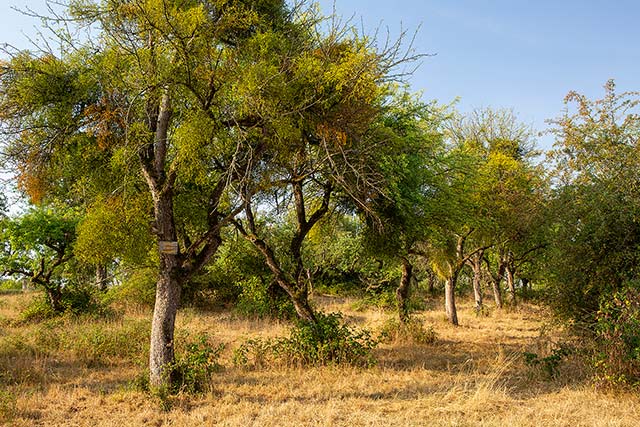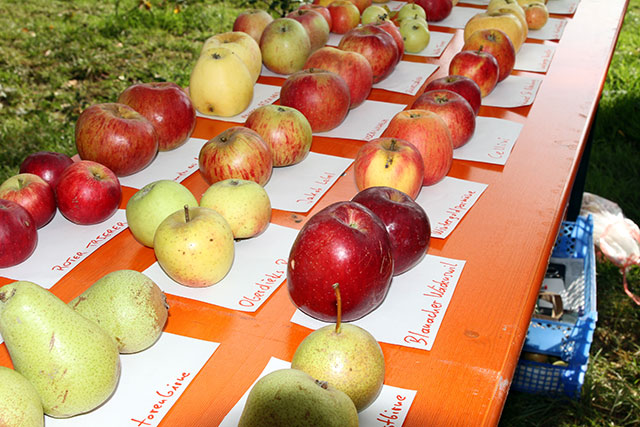On 25 September, we offer you a free guided tour of the largest orchard in Luxembourg with its 1,200 fruit trees.
Bongert Altenhoven on Geoportail
The Bongert Altenhoven in Bettembourg is not only one of the nature reserves of the Minett UNESCO Biosphere, but also a buffer zone of the biosphere reserve and the largest orchard in the whole of Luxembourg. On 27 September, as part of our Nature Lab, we offer you a guided tour of this unique natural and cultural landscape in Luxembourg. On an area of 12.5 hectares, there are about 1200 fruit trees, which cannot be found in this form anywhere else in Luxembourg. For this reason, the entire orchard, which has been maintained since the early 1990s by “natur&ëmwelt/Fondation Hëllef fir d’Natur”, has become a classified nature reserve in 1998.
The history of the “Um Bierg” orchard
The land on which the orchard stands has been used for agriculture for a long time. Before it became an orchard, there were fields, which, according to research by Norbert Quintus, can still be seen in the relief of the land.
At the end of the 19th century, the first fruit trees were planted on an area of 5.5 hectares. In 1916, the orchard was extended by 6 hectares and in 1923, Jean-Pierre Altenhoven, a butcher from Rumelange, bought the land and built a large, modern farm. It consisted of a dwelling house, a barn, stables, fruit storage and a distillery. The mirabelle plum orchard was planted in 1925 as the last part of the Bongert Altenhoven. The orchard was used for fruit production until the 1960s. 300 to 500 hundredweight of fresh fruit could be harvested here, more in good years.
From the 1960s until the early 1990s, the orchard was no longer cultivated as such. This changed after 1991, when a storm uprooted or broke about 200 old apple trees. Natur&ëmwelt then planted around 300 new fruit trees and has been managing the country’s largest orchard ever since. The farm, built in the 1920s, was demolished at the end of the 1970s during the construction of the motorway A3, which borders Bongert Altenhoven to the west.
The orchard as a biotope
An educational trail of about 1300 metres runs through the Bongert Altenhoven, offering you the chance to discover the biodiversity of this nature reserve.
 |
 |
 |
 |
 |
 |
© Marc Weis
Over 80 different varieties of fruit grow on the 12.5 hectares, mainly local and traditional apples, pears, and plums. Nearly 70 different species of birds live here, some of which are on the Red List, as well as a number of mammals such as martens, dormice and several species of bats.
In the summer, cows graze on the meadows between the fruit trees to prevent hedges from growing between the trees, and the “Groupe de Recherche Mycologique de la Société des Naturalistes Luxembourgeois” has identified more than 200 different species of wood-dwelling fungi in the Bongert Altenhoven alone, some of which are very rare in Luxembourg.
Guided tour on 25 September
On Wednesday 25 September, the Minett UNESCO Biosphere invites you to discover the Bongert Altenhoven. Accompanied by Richard Dahlem of natur&ëmwelt, who knows this orchard like the back of his hand, you will learn more about the history of this place. Richard Dahlem, a pomologist, will show you old and rare varieties of apples and pears, which you will be able to taste on the spot. The event starts at 17.30 and lasts about 2 hours.
 |
 |
 |
© Commune de Bettembourg
This visit is free of charge, but you must register in advance. Simply click or scan the QR code below to register.
 |



